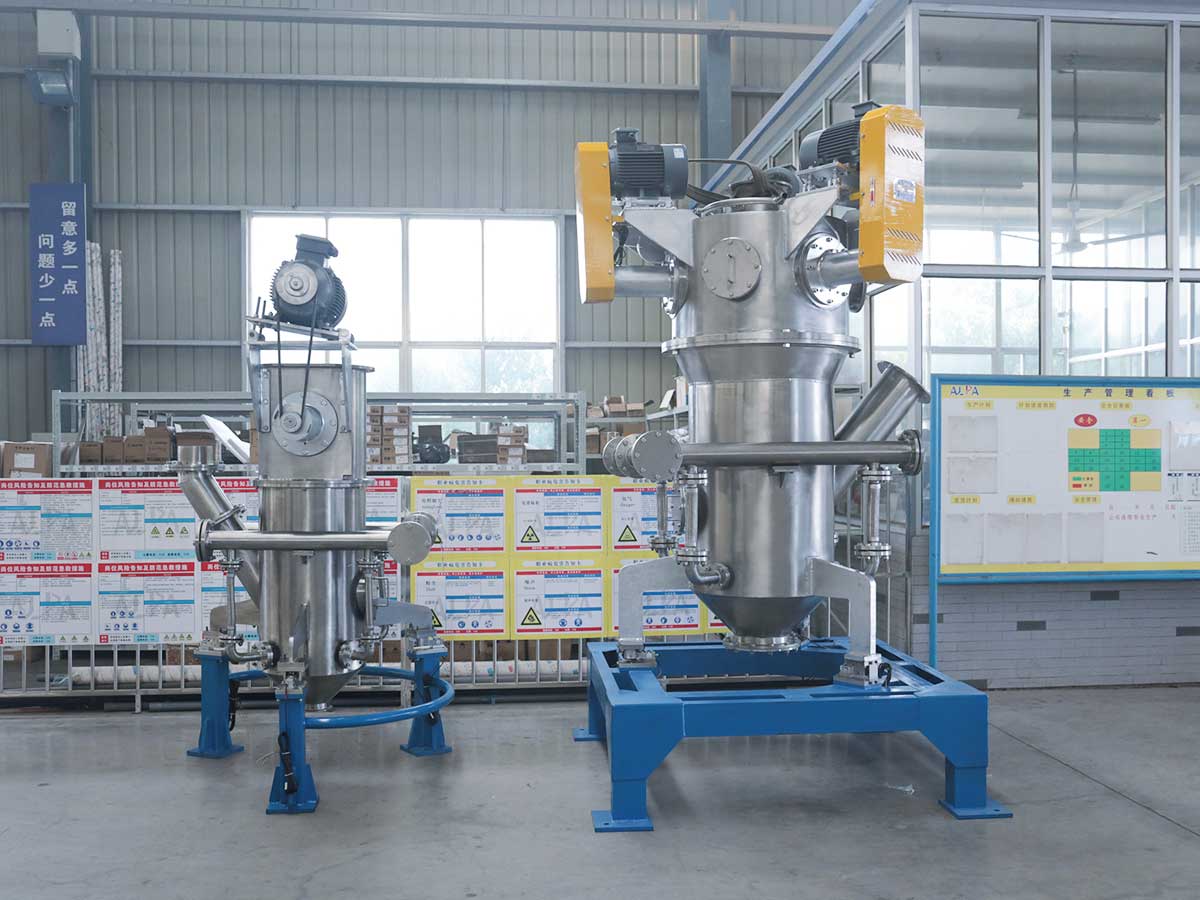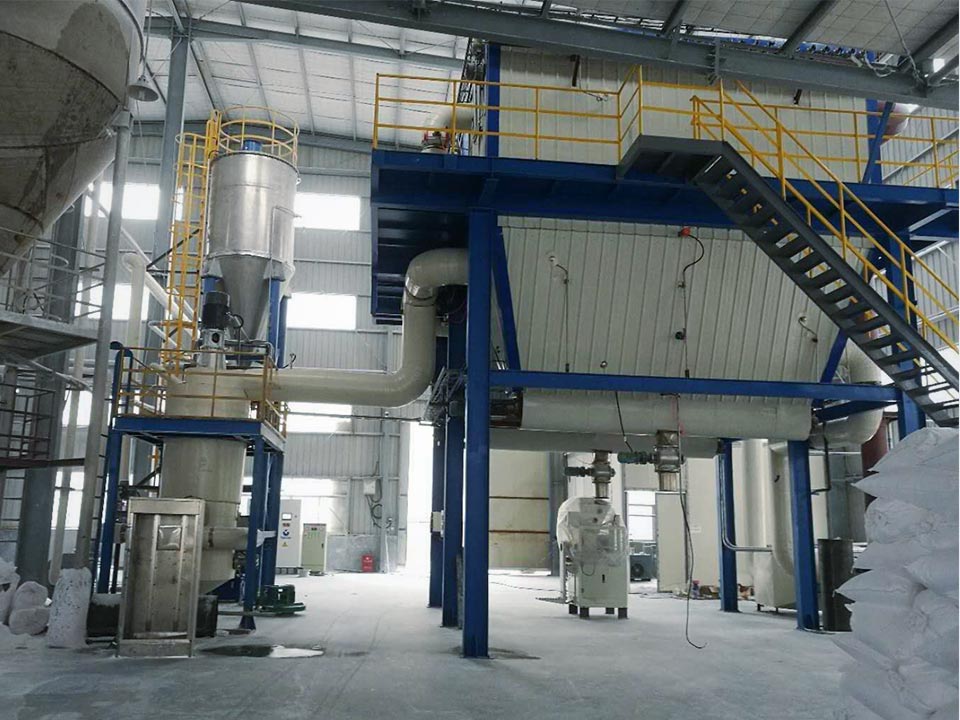Air classifier is a favorable equipment to control product particle size
The ultrafine air classifier can be operated in a sterile state. The average particle size of the material after the air classifier is fine, the particle size distribution is narrow, the particle shape is smooth, and it has the characteristics of high purity, high activity, and good dispersion. In addition, no heat is generated during the pulverization process, which is suitable for pulverizing low melting point and heat-sensitive substances. Therefore, the ultrafine airflow crusher is very suitable for the preparation of ultrafine drugs. According to statistics, about 25% of the international ultrafine airflow classifiers are used for Pharmaceutical Industry.
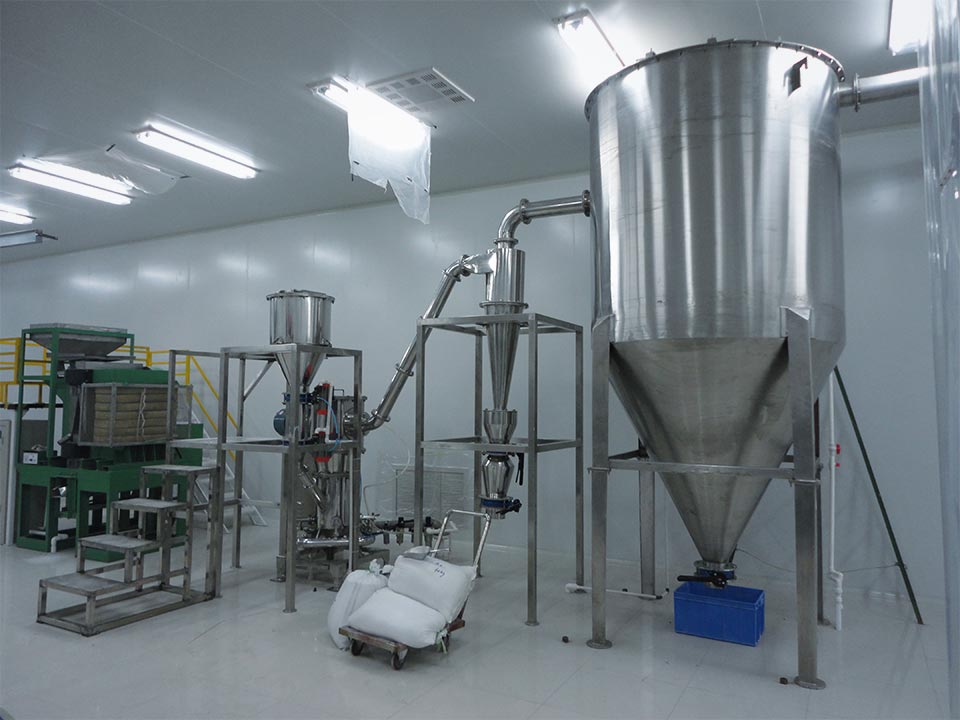
The control of the product particle size by the air classifier mainly depends on the raw material particle size, crushing pressure, feed pressure and feed speed. The logical relationship between the air classifier and these parameters is: the smaller the size of the raw material, the higher the crushing efficiency; the larger the size of the raw material, the lower the crushing efficiency. When the crushing pressure and the feed pressure are constant, reducing the feed speed will make the product finer and thicker. In the case of a certain feed rate, the particle size of the product will be finer, the crushing pressure will be reduced, and the product will become thicker. Therefore, the particle size control depends on the adjustment of the parameters in the ultrafine air classifier process to achieve different grinding fineness. Before smashing, it is necessary to determine the relationship between the feed speed and the pressure and then determine the appropriate smashing parameters to meet the customer's particle size requirements. The particle size of the product needs to be checked by a particle size detector to check the fineness and distribution range. In addition, if the measurement with the electron microscope can be more accurate, of course, it can also be compared with the internationally famous particle size detector.
The air classifier is a relatively precise machine. In the process of daily use and maintenance, some details still need the attention of the operator. In order to improve the classification efficiency of the ultra-fine air classifier, it is necessary to check whether the raw materials meet the requirements before production. Mix foreign matter into the raw material. During the production process, a certain amount of material must be kept in the grinding cavity of the air classifier. Under the condition of constant pulverizing gas flow, there are more materials in the grinding chamber, the current of the classifier is larger, and the materials in the grinding chamber are less, and the current of the classifier is smaller. In addition, the feeding speed must be uniform and stable, not too fast or too slow. If the feeding speed is too fast, the equipment will be overloaded.
The equipment should be maintained regularly, and the air supply pressure should be checked frequently to meet the pressure required for crushing, as well as the classification motor of the airflow classifier. After the equipment runs for 3000 hours, or for long-term shutdown and long-term storage and reuse, please clean the nozzles and grinding chambers. The materials on the inner wall should be cleaned up in time to prevent the classification effect of the air classifier from being affected.
Ultrafine jet mill provides a new way for medical powder
Traditional pulverizers are also very high in particle size and powder extraction rate, and have certain limitations in the powder collection rate and the preservation of effective ingredients, etc., and they need to be adjusted accordingly when used in various industries. The ultra-fine jet mill technology is better when pulverizing, providing a new outlet for ultra-fine Chinese medicine powder.
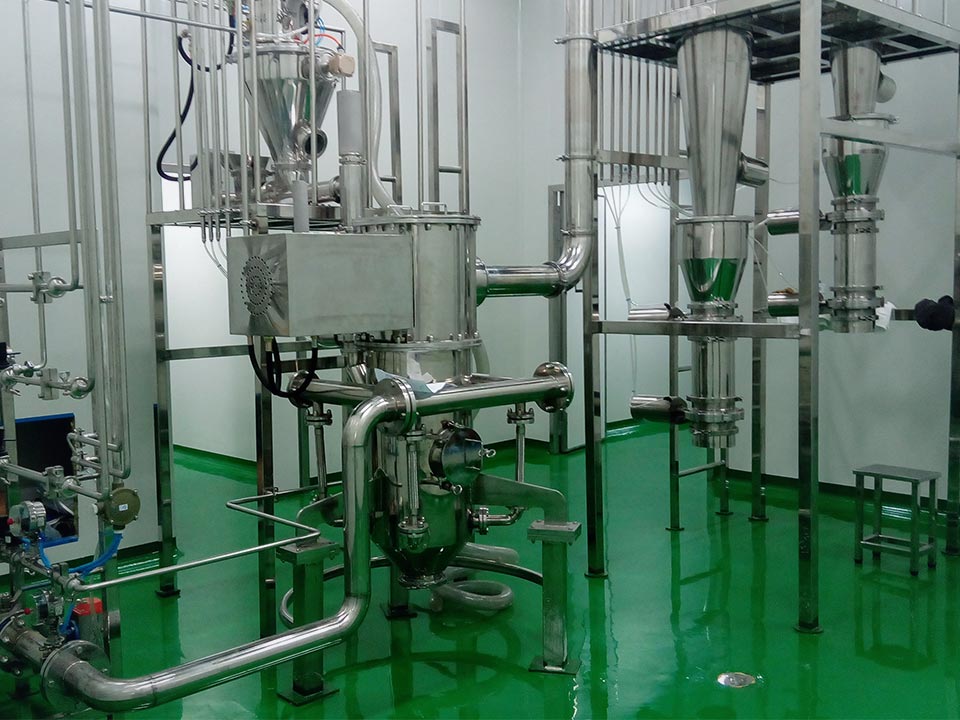
The working principle of the ultra-fine jet mill is to pass purified and dried compressed air through a special nozzle of a certain shape to form an airflow at a speed of 3,600 kilometers per hour. With its huge kinetic energy, the animal materials collide with each other in the closed pulverizing cavity, making Mohs Materials with a hardness of 1-10 are crushed into superfine powder. The size and output of the required particles can be effectively controlled by adjusting the working parameters of the crushing classifier.
The features of ultra-fine jet mill products are:
- The equipment only needs compressed air to run, and does not require a motor for classification. The equipment itself has an automatic gaseous classification device.
- Low energy consumption, jet pulverization itself is a pulverizing process with higher energy consumption. Our equipment has been optimized so that the pulverizing airflow is greater than the feed airflow without back blowing, thus ensuring lower energy consumption.
- The whole system is made of stainless steel, and the internal mirror surface is 0.2 micron polished, which reduces adhesion and loss.
- The cyclone collection system can effectively reduce the loss of materials and avoid expensive production losses.
- Using twin-screw feeding, it can operate continuously and stably effectively, ensuring stable particle size distribution.
- The equipment is easy to clean and install, and easy to disassemble and assemble.
- The equipment is equipped with casters, which can be easily moved to the cleaning workshop to clean the equipment.
With the continuous advancement of ultrafine jet pulverization technology, the pharmaceutical process is also constantly improving. The jet mill plays a relatively large role in the pharmaceutical crushing process, and has made certain breakthroughs in improving the quality of pharmaceuticals. Improving the efficiency, fineness of pulverization and uniform particle size distribution of the ultrafine jet pulverizer is the direction of enterprise research and development.
Applicable scenarios of laboratory jet mill
The laboratory jet mill is suitable for dry, heat-sensitive materials. The equipment does not heat up during operation, has a simple structure, is easy to use, and has no moving parts. When the chemical raw materials and pharmaceutical materials are stable, the materials can be crushed to the limit of 1-3 microns. After crushing, the materials are pollution-free. The optimized compact appearance is suitable for laboratories with high site requirements. The laboratory jet mill is used in small batch production and experiments, and is suitable for ultrafine pulverization and depolymerization of various dry and brittle raw materials, crystals, etc.
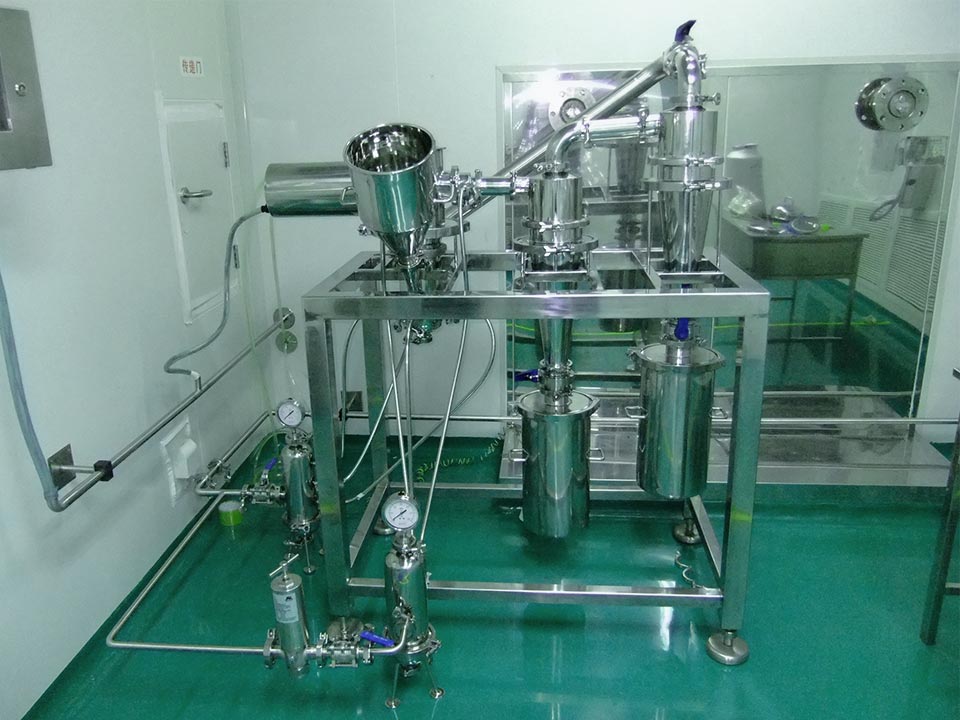
The material of the laboratory jet mill is crushed in a crushing chamber made of high-purity and high-hard materials. Only clean compressed air is in contact with the material, without any other impurities, and no mechanical friction, which greatly guarantees the purity of the product. . The laboratory jet mill is always pulverized at a temperature below normal temperature. Generally, it will not change the chemical properties of materials under room temperature conditions, so it is especially suitable for heat-sensitive raw materials.
The entire system of the laboratory jet mill is sealed and crushed, with less dust, low noise, and the production process is clean and environmentally friendly. The pulverization process of the laboratory jet mill is extremely short, which can be completed in an instant without repeated pulverization, and the efficiency is much higher than other milling equipment. Simple operation, easy disassembly and assembly, and easy cleaning.
The pulverization effect can be achieved by using a laboratory jet mill, all of which require a compressor to provide a compressed air source, but there is a difference between the pulverization process and the process of controlling the particle size.
When choosing a laboratory jet mill, you must understand whether the material you want to process is dangerous. If there is a risk of dust burning or explosion, you have to consider using nitrogen as the pulverizing medium. It must not be used for cost and safety protection. Because the jet mill is ultra-fine pulverization, the finer the raw material particles are processed, the larger the specific surface area. The risk factor is also greater. The other is to consider the safety protection of the equipment itself, whether anti-static filter bags are used, and whether there are measures such as system pressure monitoring.
The laboratory jet mill is an ultrafine pulverizing equipment, not a nanometer pulverizing equipment. This physical method is difficult to reach the nanometer level. The laboratory jet mill is mainly used for a small number of samples, easy to clean is a more important function.
What are the characteristics of jet mill used for silica matting powder
Silica can be used in all coatings. In the processing of silica matting powder, pulverization and classification are indispensable. At this time, a fluidized bed jet mill is needed. The equipment uses high-speed airflow to carry the animal material, so that the particles of the raw material are friction and shear between the particles, and the particles and the inner wall of the equipment collide with each other, so that the raw materials are subjected to double pulverization, and the pulverization efficiency is improved. Therefore, the fluidized bed jet mill is almost instantaneous. The raw materials can be crushed to ultrafine powder state.
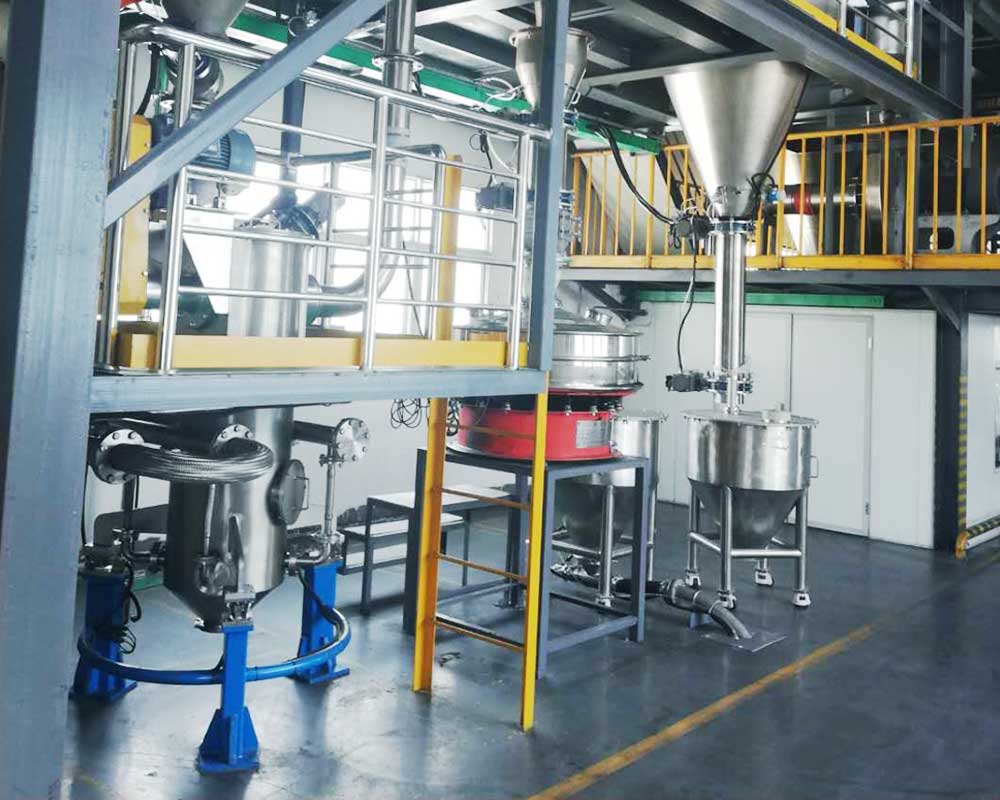
The fluidized bed jet mill for silica matting powder has the following characteristics:
The principle and characteristics of the lower crushing area are the same as those of the disc-type supersonic jet mill, so that the powder added to the mill is easily hit by the air flow, and has a higher crushing probability than the fluidized bed collision type model.
The upper classification principle adopts fluidized bed type horizontal turbine forced classification, the cutting point is accurate, the efficiency is high, and any raw material of different hardness can be controlled.
In the crushing process, due to the forced classification of the upper turbine, the coarse material settles on the bottom of the crusher. The powder concentration in the crushing area is much higher than that of the disc jet mill, so this model is more pulverized than the disc jet mill higher efficiency.
The materials of the crushing parts are all made of corundum ceramic materials, including the high-speed classifying impellers are all made of corundum ceramic materials. Ensure that the pulverized material maintains high purity, no contamination by impurities, and the whiteness of the finished product is not affected.
The raw materials can be selected according to the customer's process requirements and performance requirements such as raw material whiteness, transparency, particle hardness, pore volume oil absorption value, etc. The crushing model can process powder products that meet the required particle size.
When processing silica matting powder, its product fineness can be d100<18μm. When it smashes the crushed object, it can adjust the median diameter of the finished product while ensuring the upper limit of the control particle size. The particle size distribution (median diameter) of the required powder product can be controlled manually.
What are the working steps and core technology of the jet mill?
With its unique working principle, the jet mill can process ultrafine powders of various materials in a dry, high-purity, and low-temperature manner. It is widely used in chemicals, mining, abrasives, battery materials, refractory materials, non-metallic minerals, metallurgy, and building materials. , Pharmaceutical, food, pesticide, feed, new materials, environmental protection and other industries and various dry powder materials ultra-fine crushing, breaking and particle shaping.
The jet mill is one of the most important ultra-fine grinding equipment. Among them, the fluidized-bed jet mill has the advantages of low energy consumption, low wear and high classification accuracy, and is the most widely used in the current ultra-fine grinding equipment.
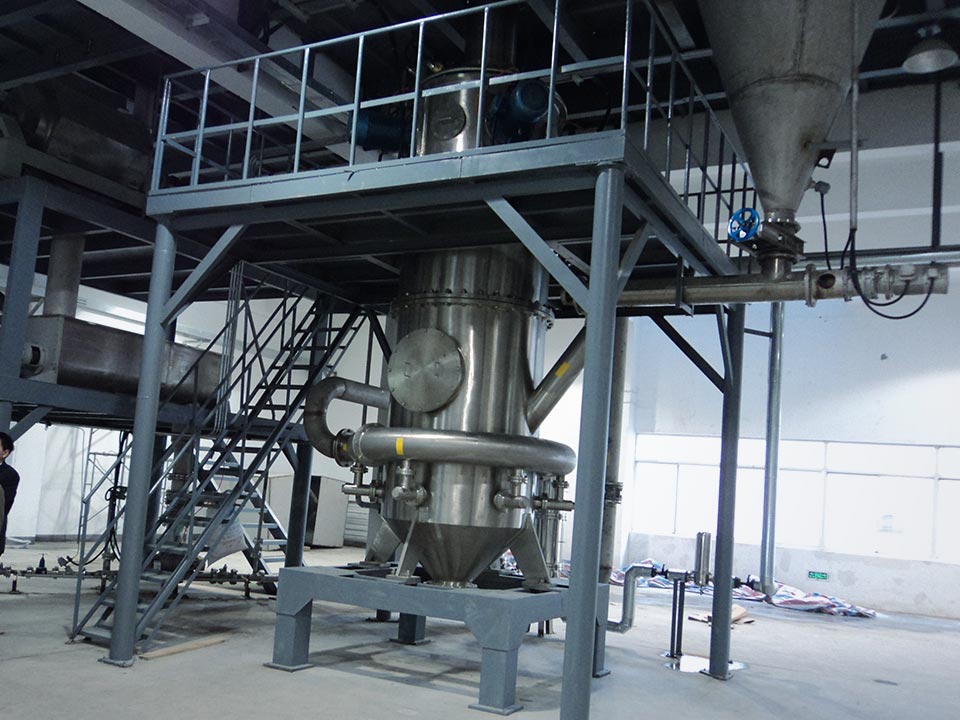
Working principle and characteristics of fluidized bed jet mill:
The fluidized bed jet mill combines the principle of counter-injection or counter-injection with the expanding gas jet flow in the fluidized bed. Its working principle is:
(1) The material is fed into the silo through the star valve, and the screw feeder sends the material into the crushing chamber or directly into the crushing chamber;
(2) The supersonic jet generated by the rapid expansion and acceleration of compressed air through the pulverizing nozzle forms a centripetal reverse jet flow field in the lower part of the pulverizing chamber. Under the action of the pressure difference, the material at the bottom of the mill chamber is fluidized, and the accelerated material The intersections of multiple nozzles converge, causing violent impact, collision, friction and crushing;
(3) The pulverized material moves to a certain height in the upper part of the crushing chamber with the rising air flow. The coarse particles fall back to the lower part of the mill chamber along the wall of the mill under the action of gravity, and the fine powder moves to the upper turbine classifier along with the air flow. machine.
(4) In the flow field generated by the high-speed turbine, the coarse particles are thrown to the vicinity of the cylinder wall under the action of centrifugal force, and fall back to the lower part of the mill chamber together with the stalled coarse powder to be crushed.
(5) The fine powder that meets the fineness requirements is transported to the cyclone separator through the exhaust pipe through the grading sheet flow channel for product collection. A small amount of fine powder is further separated from the gas and solid by the bag trap, and the purified air is discharged by the induced draft fan. outside.
(6) The connecting pipe can keep the pressure of the silo and the crushing chamber consistent.
(7) The upper and lower material levels of the silo are automatically controlled by the precision level sensor to automatically control the star valve feeding, and the material level of the crushing chamber is automatically controlled by the dynamic current transmitter on the classifier to automatically control the feeding speed of the screw feeder, so that the crushing is always at the best status.
The core R&D technologies possessed by the jet mill include: full use of jet energy, high-efficiency classification, strict control over smashing technology, reliable sealing and no leakage technology, large particle control technology, complete, stable and smooth system design technology, constant pulverization cavity Gas-solid concentration ratio technology, ultra-fine powder collection and dust removal and flue gas treatment technology, ultra-fine pulverized particle shape control technology, etc.
Performance characteristics and material selection of multi-stage air classifier
Performance characteristics of multi-stage air classifier:
1. Large output, low energy consumption and high grading efficiency.
2. Concentrated particle size: The machine uses an original vertical impeller for classification. The stable classification technology and special sealing measures effectively prevent the leakage of coarse particles, so that the product has no large particles, the particle size is concentrated, and the classification accuracy is high.
3. Reasonable structure: products with 1-6 granularities can be produced at the same time according to user requirements.
4. Strong applicability: It can be combined with various mills (jet mill, mechanical mill, ball mill, Raymond mill, vibration mill, etc.) to form a closed-circuit or open-circuit combined operation.
5. High degree of automation: all impeller classifiers at all levels adopt electronic frequency modulation and stepless speed regulation, and the automatic circulation type multi-box dust collection process realizes electronic control and automatic dust removal, which improves the stability of the negative pressure of the whole machine.
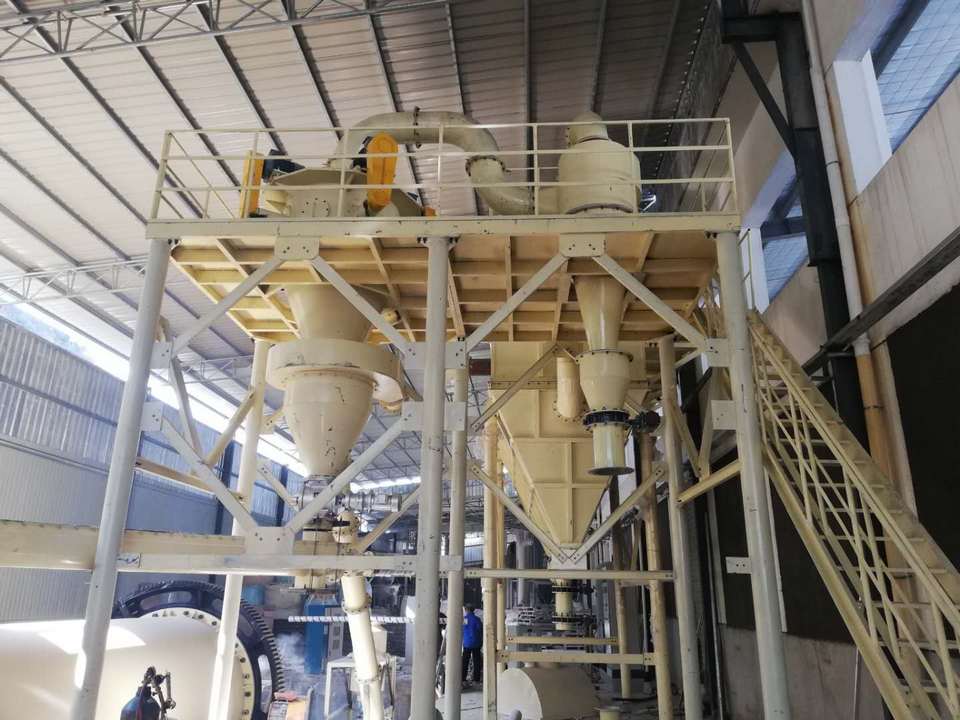
Maintenance method of multi-stage air classifier:
1. All lubricating points are lubricated with sodium-based grease or calcium-based grease.
2. Check whether the lubricating oil inside the reducer is on the line of the oil needle every shift, and change the oil every 6 months.
3. Frequently check whether the bearing bushes, bearings and sealing rings of the lower support or intermediate frame are worn out, and whether the bearing bushes are damaged in order to replace them in time.
4. For bearing lubrication, a manual dry oil pump must be used to inject high-pressure oil into the bearing every 4 hours to maintain the sealing performance of the bearing.
For the equipment materials of the multi-stage air classifier, there are mainly three types: carbon steel, stainless steel, and carbon steel plus wear protection. Choose the appropriate equipment material according to the characteristics of different materials.
The overall cost of a multi-stage air classifier made of carbon steel is lower than that of stainless steel and carbon steel with wear protection. For materials used in the food and pharmaceutical industries, stainless steel equipment is usually used, so that no pollution will be caused during the classification process. For materials with high hardness such as quartz, carbon steel and internal ceramic wear protection are used to extend the service life of the equipment and reduce the frequency of replacing parts.
Multi-stage air classifiers are widely used in the kaolin industry. Kaolin is a non-metallic mineral with kaolin as the main mineral composition. It is mainly used for household ceramics, building sanitary ceramics and refractory ceramics. It is also used for papermaking and construction. As fillers or white pigments for paints, rubber, plastics, textiles, etc., kaolin has been used in many industries.
At present, kaolin mainly relies on mechanical pulverizers and jet pulverizers for fine and deep processing. The mechanical crusher generally crushes to about 700-1000 mesh, but the use of mechanical crushing will increase the iron content in the final product, which is not suitable for industries that require purity. The jet mill can pulverize to 1000-5000 mesh, and the product produced has a finer particle size and higher purity. For industries with relatively high application purity requirements, multi-stage airflow classifiers should be used.
What are the reasons for the vibration of the jet mill
The jet mill plays a pivotal role in medicine and chemical industry, but it is precisely because of this that the mill equipment has a very important role in actual operation and needs to be extremely valued. Generally speaking, people who only need to have three months of operation will have very easy operation experience. In many cases, we will use the best operator to cooperate. The ceramic-lined pipe is manufactured by the high-tech production process-self-spreading high-temperature clutch synthesis method. The pipe is composed of corundum ceramic, transition layer, and steel from the inside to the outside. The ceramic layer is densely formed at a high temperature above 2200℃. Corundum porcelain (AL2O3) forms a firm bond with the steel pipe through the transition layer.
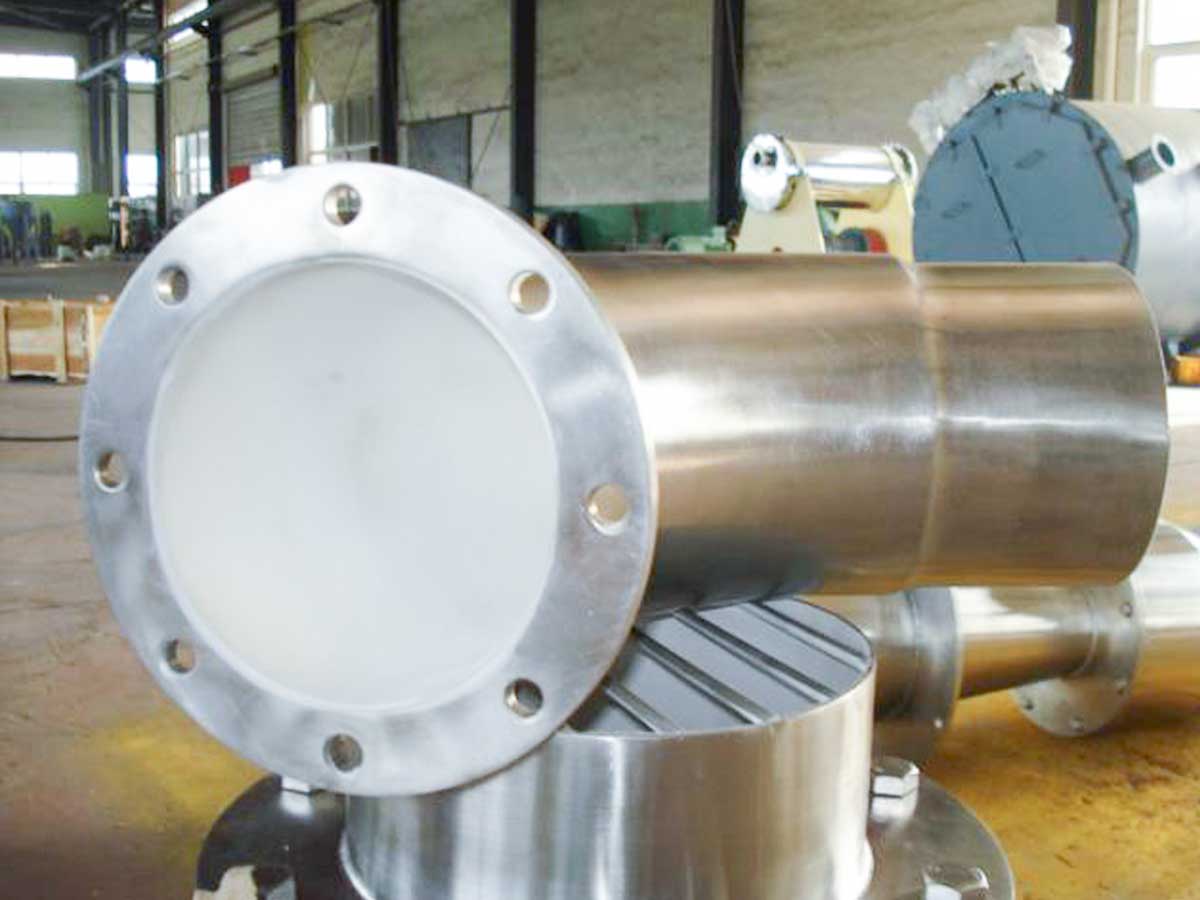
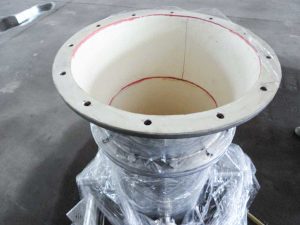
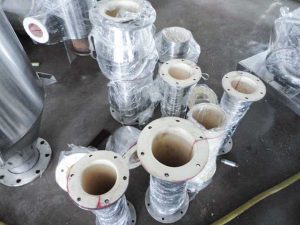
Air jet pulverizers generally adopt the way that the motor is directly connected to the pulverizing device. This connection is very simple, fast, and easy to maintain. It is the commonly used connection method at present. If the two parts are not well connected during the assembly process, the overall vibration of the jet mill equipment will occur, causing serious damage to the machine body. If we cannot accurately operate the equipment, it will cause damage. There are many reasons for the vibration of the jet mill. We must frequently overhaul the equipment in order to ensure the stable operation of the jet mill during processing.
1. The hammer is installed incorrectly during the maintenance and assembly. In order to prevent the weight of the rotor from losing balance when the hammers are used in reverse, all the hammers in the crusher must be reversed, otherwise strong vibration will occur during operation.
2. Corresponding to the difference between the weight of the two sets of hammers is more than 5 grams. The elimination method is to adjust the weight of the hammer so that the difference between the weight of the corresponding two groups is less than 5 grams.
3. The individual hammer pieces are stuck too tightly and are not thrown off during operation. It can be turned and observed by hand after stopping the machine, and find a way to make the hammer rotate flexibly.
4. The weight of other parts on the rotor is unbalanced. At this time, you need to carefully check and adjust the balance.
5. The main shaft is bent and deformed. The solution is to straighten it or replace it.
6. The bearing clearance exceeds the limit or is damaged. Generally, the problem can be solved by replacing the new bearing.
7. The bottom corner fixing nut is not tightened or loosened during operation. The solution is to tighten it.
The jet mill has a large processing capacity, and the optimized structure of the equipment can increase the throughput of materials by more than 42%, which greatly improves the production capacity. In addition, the discharge port has also been specially modified, which can adjust the discharge particle size in a larger range, which can better meet the needs of customers and the market, and has a stronger market adaptability.
How to ensure the uniform particle size distribution of the product after jet pulverization
Although the application of jet mills is becoming more and more widespread, the emergence of equipment failure problems cannot be avoided. So, what are the faults that often occur in jet milling equipment and how to solve them.
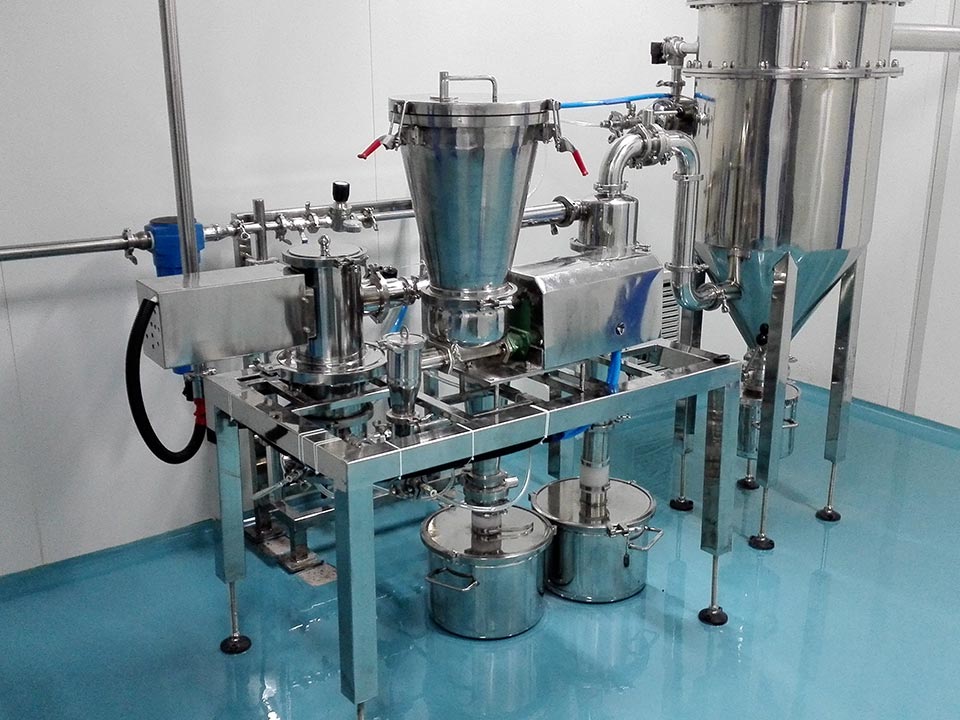
After the jet mill is used for a period of time, the particles may become thicker. How should we deal with this situation? A thicker particle size means that the output may decrease, which may be caused by the wear of blades, bushings and other parts. These commonly used parts require routine maintenance, but also require regular inspections for wear and tear. If it is severely worn, replace it immediately. Otherwise, the grain size will become thicker.
The better the daily maintenance of the jet mill, the longer the service life and the longer the service life, the higher the value created for you.
Installation and debugging of jet mill:
1. After the machine is in place, it should be placed steadily and fixed with foot screws.
2. The inner cavity of the machine should be cleaned before trial operation.
3. During the test, attention should be paid to whether the machine has abnormal noise. If there is noise, it should be stopped in time for inspection.
4. Install the storage bag in the unloading hopper.
5. After turning on the power, pay attention to the rotation direction of the spindle, so that the spindle rotates in the correct direction as shown.
Operation and precautions of jet mill:
1. Before use, check whether all the fasteners of the machine are fastened and the belts are fastened.
2. The running direction of the main shaft must be in accordance with the direction of the arrow shown on the shield, otherwise it will damage the machine and may cause crushing damage to the fuselage.
3. Check whether there are metals and other hard debris in the crushing chamber of the machine, otherwise it will damage the jet mill and affect the operation of the machine.
4. The oil cup on the machine should be filled with lubricating oil continuously to ensure the normal operation of the machine.
5. Regularly check whether the grinder screen is abnormal, if it is damaged, it should be replaced immediately.
6. Check whether the electrical appliances are complete.
7. The purity of the materials must be checked before crushing, and metal debris must not be mixed in, so as to avoid damage to the jet mill or cause combustion and other accidents.
8. Stop feeding before shutting down. If you do not continue to use it, take out the leftover material from the machine.
Advantages of jet mill in the process of disintegrating and disaggregating agglomerated powder
During the crushing process, the mineral material absorbs a large amount of mechanical energy or thermal energy, so that the surface of the new ultrafine particles has a relatively high surface energy, and the particles are in an extremely unstable state. In order to reduce the surface energy of particles, they tend to reach a stable state by gathering close together, and it is also easy to cause particle agglomeration. Therefore, in the processing of ultra-fine powder, dispersing and disaggregating is also an important link, and there are many equipment used to disperse ultra-fine powder, and jet mill is one of them. Jet mill is often used for dry dispersion of agglomerated powder. Its advantages are high particle size reduction rate, no damage to the original morphology of particles, and strict control of large particles.
There are many types of jet mills, and they are also widely used for ultrafine grinding of materials below medium hardness. Its biggest feature is large output, narrow particle size distribution, and low product contamination. In the process of disaggregation and disaggregation of jet mill, agglomerated or agglomerated materials are fed into the dispersing cavity through the screw feeder, and the materials are impacted and sheared by the high-speed rotating rotor to crush and restore the materials. The scattered materials are transported to the material collection area by the ascending airflow, and are collected by the cyclone collector and the pulse dust collector, and the purified air is discharged by the induced draft fan.
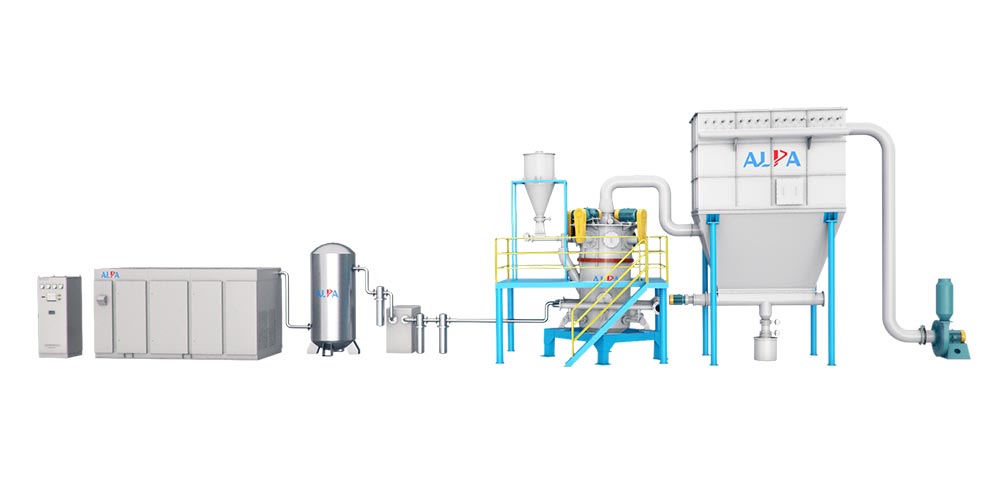
Jet mill has the following advantages in the preparation of ultrafine powder by dispersing and disaggregating:
- Adopting innovative dispersing structure, compared with traditional dispersing machine, the unit energy consumption is reduced by 30%.
- The crushing and dispersing parts are made of highly wear-resistant materials, with low wear and long service life.
- The original particle size of the material can be restored after disaggregation and disintegration, and the particle size recovery rate can reach 100%.
- It can be equipped with an air flow classification device to classify materials with different finenesses during the break-up operation.
- The crushing rotor is balanced at high speed, and the machine base adopts anti-vibration design, stable operation and minimal vibration.
- Wide application range: hot air can be introduced to disperse and dry high-humidity materials; inert gas can be input to disperse flammable and explosive materials; cooling system can be added to heat sensitive materials or those with extremely low melting point The materials are broken up.
- The system adopts negative pressure production, and there is no dust pollution on the production site.
- Intelligent feedback control, simple operation and stable operation.
Jet mill can be used for calcining agglomerates, viscous, strong agglomeration powders, such as various metal powders, alloy powders, ultra-fine calcined kaolin, water-washed kaolin, nano-calcium carbonate, flame retardants, strontium carbonate, nano-active calcium, pyrophyllite, Precipitating barium sulfate, aluminum oxide, aluminum hydroxide, chemical raw materials, dyes, etc.
The influence of pressure and temperature on inert gas jet mill
The main factors affecting the crushing effect of the jet mill:
- Pressure
The pressure of the working fluid is the main parameter that produces the jet flow velocity, and it is also the main parameter that affects the pulverization fineness. The kinetic energy of the working fluid jet is proportional to the first power of its mass and the square of its speed. Therefore, the higher the pressure and the faster the speed, the greater the kinetic energy. When the steam pressure increases to a certain value, although the flow rate of the airflow through the nozzle no longer increases, but the pressure increases, the density of the airflow increases, and the kinetic energy increases accordingly. As for how high the pressure to choose when crushing depends on the crushability and fineness requirements of the material, when superheated steam is used to crush the titanium dioxide, the steam pressure is generally 0.8~1.7MPa, and the crushed and calcined materials are generally higher. The material can be lower.
- Temperature
Because of the increase in temperature, the flow rate of the gas can be increased. Take air as an example: the critical velocity at room temperature is 320m/s. When the temperature rises to 480℃, the critical velocity can be increased to 500m/s, that is, the kinetic energy increases by 150%. Increasing the temperature of the working fluid is beneficial to the crushing effect. When pulverizing titanium dioxide, the temperature of superheated steam is generally about 300-400℃. Usually, the temperature is higher when pulverizing the calcined material, and the temperature is lower when pulverizing the surface-treated material. Because some surface treatment agents, especially organic surface treatment agents, are not resistant to high temperatures, sometimes it is only necessary to overheat 100°C on the basis of the original steam temperature.
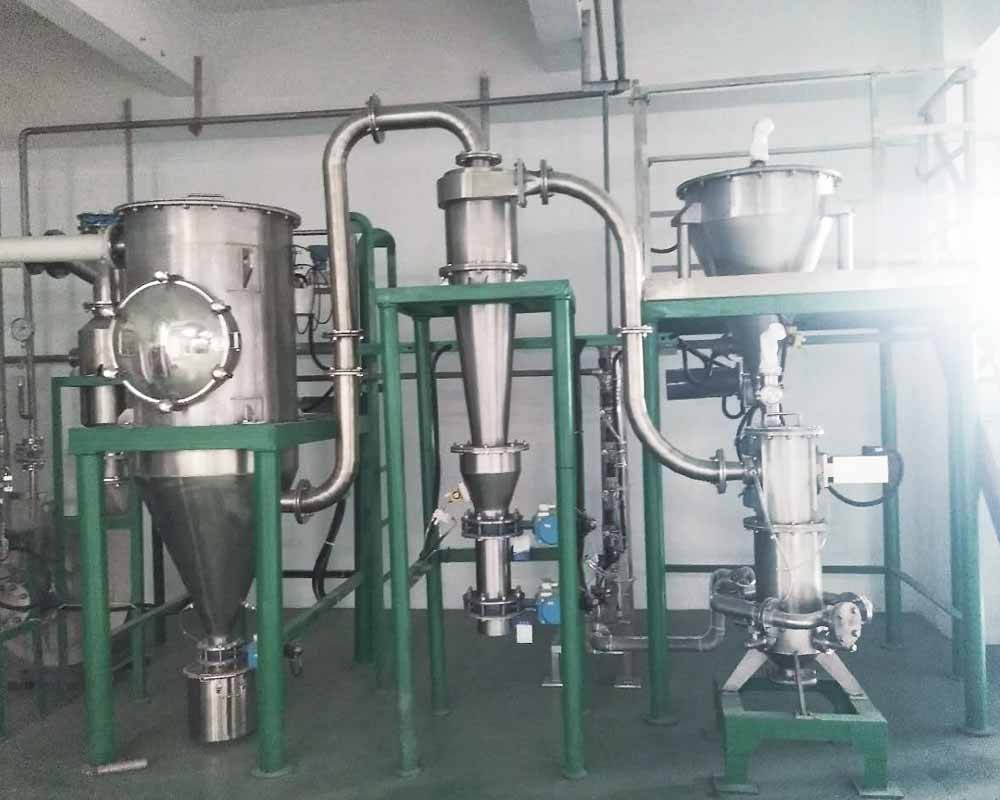
Note on jet mill:
(1) When the unloading equipment is in operation, the unloading outlet cannot be reached to avoid accidents.
(2) The speed of the impeller cannot exceed the specified speed, otherwise the temperature will be too high and the impeller and motor will be damaged.
(3) The safety valve should be checked regularly to ensure safety.
The jet mill is completely enclosed during the crushing process, and has a professional dust collection device, which will not cause dust leakage. This is a good equipment for many workshops that need to undergo environmental assessment transformation. This jet mill is widely used in chemical, mining, abrasives, refractory materials, battery materials, metallurgy, building materials, pharmaceuticals, ceramics, feed, new materials, environmental protection and other industries, as well as ultra-fine grinding and dispersing of various dry powder materials. And the performance of shaping particles is very good, which can fully meet the mesh size of ultra-fine crushing of various materials.

